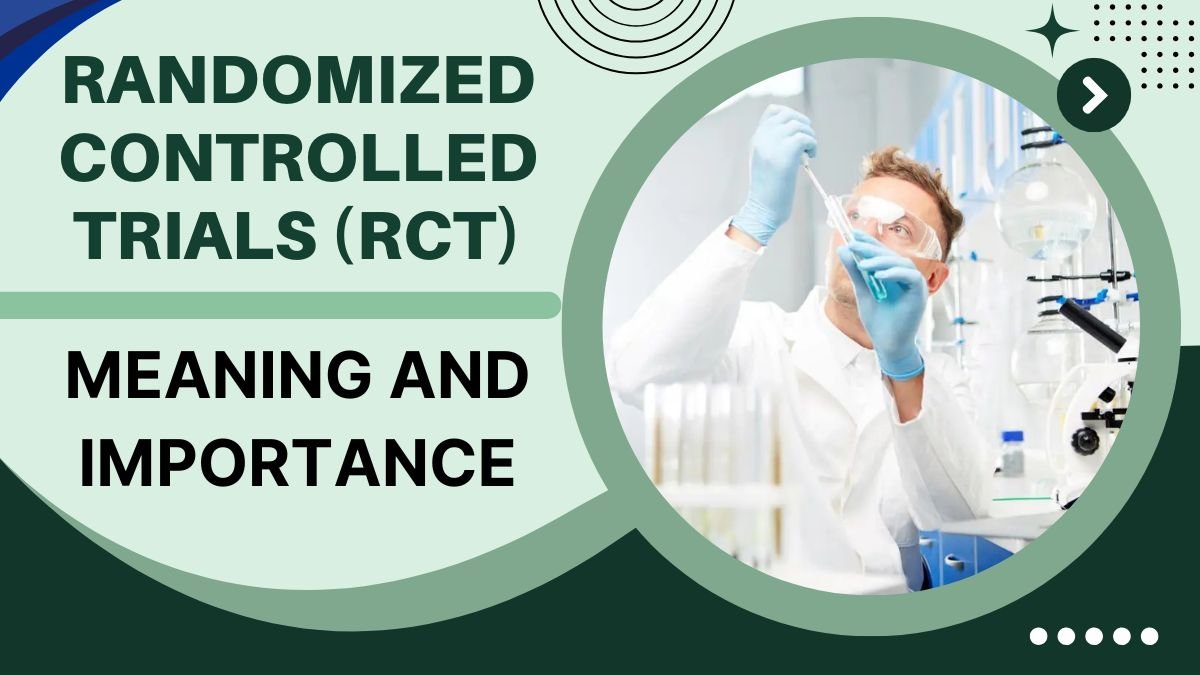In the world of modern medicine and scientific research, testing the effectiveness of new drugs, treatments, and health technologies is a major challenge. Before any drug or treatment can be directly administered to the public, it is essential to prove its safety and effectiveness. Randomized Controlled Trials (RCTs) are used to meet this requirement. This method is often called the “gold standard” of medical research because it provides reliable evidence.
RCTs aim not only to determine whether a new treatment works but also to ensure that the results are not influenced by external factors or personal bias. In this method, participants are randomly assigned to different groups so that everyone has approximately the same starting conditions. One group receives the new treatment, while the other receives a standard or placebo treatment. This structure allows researchers to clearly understand the true impact of a treatment.
Meaning and Methodology of RCT
RCT refers to a scientific experiment where participants are randomly divided into groups. This method is designed to maintain the transparency and objectivity of the research. If done correctly, it ensures that the results of the research are not influenced by any personal or external factors.
1. Random Assignment
This is the foundation of an RCT. In this experiment, participants are assigned to different groups at complete randomness. Suppose there are 200 participants—a computer program or other random method will assign 100 to the intervention group and 100 to the control group. This way, every participant has an equal chance of being included in both groups. This ensures that the initial characteristics of both groups are approximately the same and that any subsequent results are due solely to the treatment.
2. Intervention and Control Groups
RCTs always have at least two groups.
- The intervention group is given the new treatment or technique. For example, a new drug, a new machine, or a new treatment method.
- The control group is given either an existing standard treatment, a placebo (fake treatment), or sometimes no treatment at all.
This is the most straightforward and scientific method of comparison to determine whether the new treatment is truly superior.
3. Comparison
When participants in both groups have completed treatment, their outcomes are closely compared. If the improvement of patients in the intervention group is clearly better than that in the control group, the new treatment is considered effective.
4. Blinding
Another important technique in RCTs is blinding. In this, participants do not know whether they received the new treatment or a placebo. Sometimes, even the researchers do not know which treatment is given to whom. This is called a double-blind study. The advantage of this is that neither the participants’ expectations nor the researcher’s bias can influence the results.
Why are RCTs so important?
1. Gold Standard for Causality
The most difficult task in any scientific research is to prove which factor actually causes an outcome. RCTs make this possible because they control for all other factors and only reveal the effect of the treatment. This is why they are called the “Gold Standard.”
2. Reducing Bias
Bias is a major problem in research. Sometimes a participant’s personal situation, the researcher’s perception, or external circumstances can influence the results. However, techniques like random assignment and blinding in RCTs largely eliminate this bias, making the results more accurate and reliable.
3. Healthcare Evidence
Almost all the drugs and treatments we rely on today have undergone some form of RCT. Whether it’s new cancer drugs, vaccines, or treatments for heart disease—RCTs play a vital role everywhere. They ensure healthcare is based on solid evidence.
4. Helps in Decision Making
Governments, hospitals, and health institutions demand solid evidence before adopting any new technology or medication. RCT results are so reliable that they are prioritized in policymaking and treatment guidelines.
5. Scientific Rigor
RCTs are conducted according to a scientific framework and rigorous standards. They include elements such as hypothesis, control, randomized distribution, and blinding, which ensure the quality of the research.
Example:
Suppose a new drug has been developed for diabetes. Researchers enroll 500 patients to test its effectiveness.
- 250 patients are given the new drug (intervention group).
- 250 patients are given the standard old drug (control group).
After a few months, the sugar levels and health improvements of the patients in both groups are compared.
If the group receiving the new drug shows clearly improved results and fewer side effects, it is considered that the new drug is indeed effective and safe.
Conclusion
In short, Randomized Controlled Trials (RCTs) are the backbone of modern medical research. They help us understand the effectiveness of new treatments and techniques, avoid bias, and make healthcare more reliable.
Without RCTs, we can never be sure whether a drug or technique is truly effective or just producing results by chance. This is why they are called the “gold standard.” In the future, as new diseases and health challenges emerge, the role of RCTs will become even more important.
